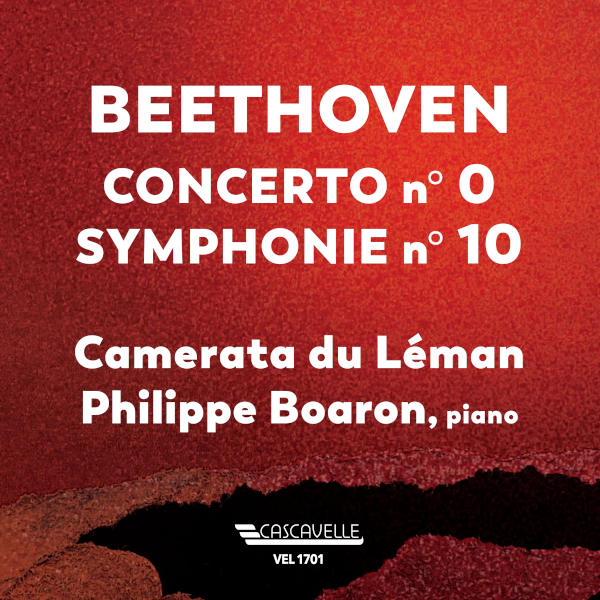Extraits / Excerpts
Beethoven: Piano Concerto No. 0 in E-Flat Major, WoO 4 - Symphony No. 10 in E-Flat Major - Philippe Boaron - Camerata du Leman
Ludwig van BEETHOVEN: Piano Concerto No. 0 in E-Flat Major, WoO 4: I. Allegro moderato – Piano Concerto No. 0 in E-Flat Major, WoO 4: II. Larghetto – Piano Concerto No. 0 in E-Flat Major, WoO 4: III. Rondo. Allegretto – Symphony No. 10 in E-Flat Major: Andante – Allegro – Andante
Philippe Boaron, Piano (Facebook)
Camerata du Léman https://www.camerataduleman.com/
Concerto for piano and orchestra No.0, WoO 4 (1784)
The Concerto WoO 4 is just such a work of debatable authenticity since the complete manuscript has not been found. However, we know that this piece was composed at the end of 1784 and the beginning of 1785 by a teenager wishing to be approved by the newly appointed Elector of Cologne, Maximilian Franz. The magic worked: three weeks after the Elector’s accession, Ludwig received his very first salary.
Although the original score did not survive, we have a piano reduction of the tutti on which his father wrote: “Concert for harpsichord or pianoforte composed by Louis van Beethoven at the age of 12” (14 actually!). The manuscript was sold at auction in 1828, a year after Beethoven’s death, as wealthy enthusiasts vied for relics; it is now kept in Berlin.
We might be tempted to compare this early concerto to those of Mozart, though it is very unlikely that Beethoven was aware of Mozart’s concertos Nos. 14, 15, and 16 (1784). The work more likely derives from the style of one of Bach’s sons’ concertos that were very popular then in northern Germany, with a possible additional influence from compositions of the Mannheim school.
It was in 1934-1935 that the Swiss musicologist Willy Hess restored the orchestral parts of the concerto’s third movement, then the first two, using the composer’s numerous annotations on the manuscript, which can be consulted today. Edwin Fischer (re)premiered the complete work on 20 June 1945 at the Potsdam Festival.
Symphony No. 10, first movement (1824 – 1827)
Although some dispute it, the existing movement of the 10th Symphony is unmistakably by Beethoven. The work was commissioned from him, following an intervention by Ferdinand Ries, by the Royal Philharmonic Society in London, for which the 9th Symphony was initially written then dedicated in extremis to the King of Prussia.
We know that the sketches for the 10th date back to 1822 and therefore coincide with the development of the 9th. A month before his death, when he was practically bedridden, Beethoven mentioned in a letter to his friend Moscheles his progress with its first movement, which had apparently been played on the piano by the composer to his close friend Karl Holz, in its three sequences. Stephan von Breuning, a lifelong friend and most reliable witness, confirmed this.
Furthermore, the manuscript left by Beethoven leaves no room for doubt, even if some musicologists argue that no sketches of the work’s thematic material have been found, which is wrong! What cannot, however, be asserted confidently is that all elements of the reconstitution were intended for this work: we know that Beethoven filled his sketchbooks in no particular order whenever, during a walk for example, an idea crossed his mind.
The well-established structure of the first movement allowed Barry Cooper, starting in 1983, to carry out a reconstruction focusing mainly on harmonization and orchestration. Of course, with his usual disconcerting inventiveness, Beethoven would not necessarily have made the same choices, but, given that Cooper had studied the compositional strategies of the Bonn Master with exceptional thoroughness, his work can still be properly qualified as credible.
André PIGUET
Translation Valérie MITCHELL
- Categories
- Composers
- Interprets
- Booklet














